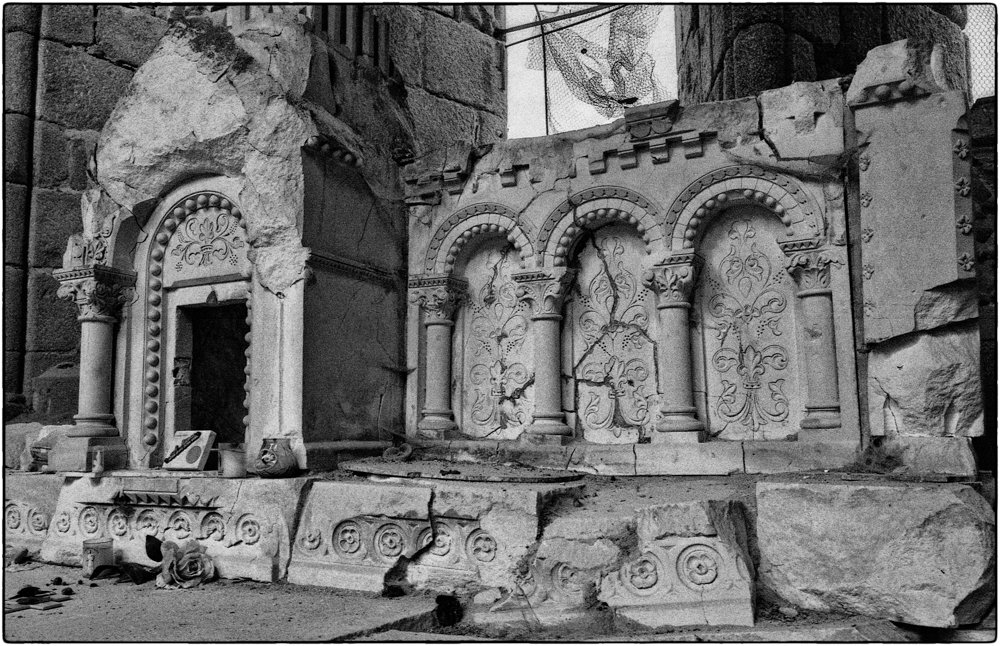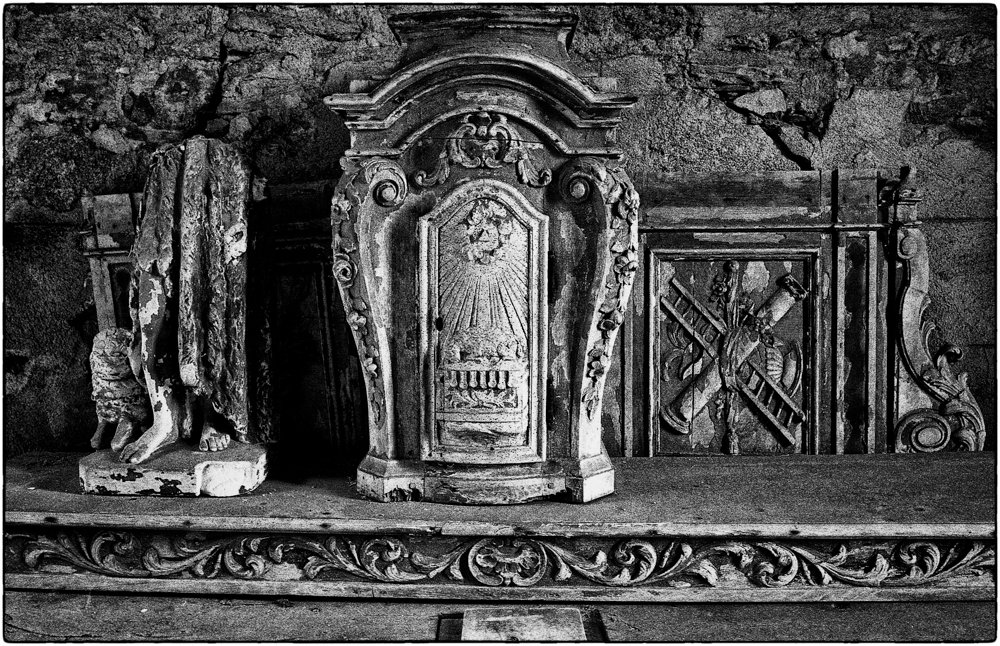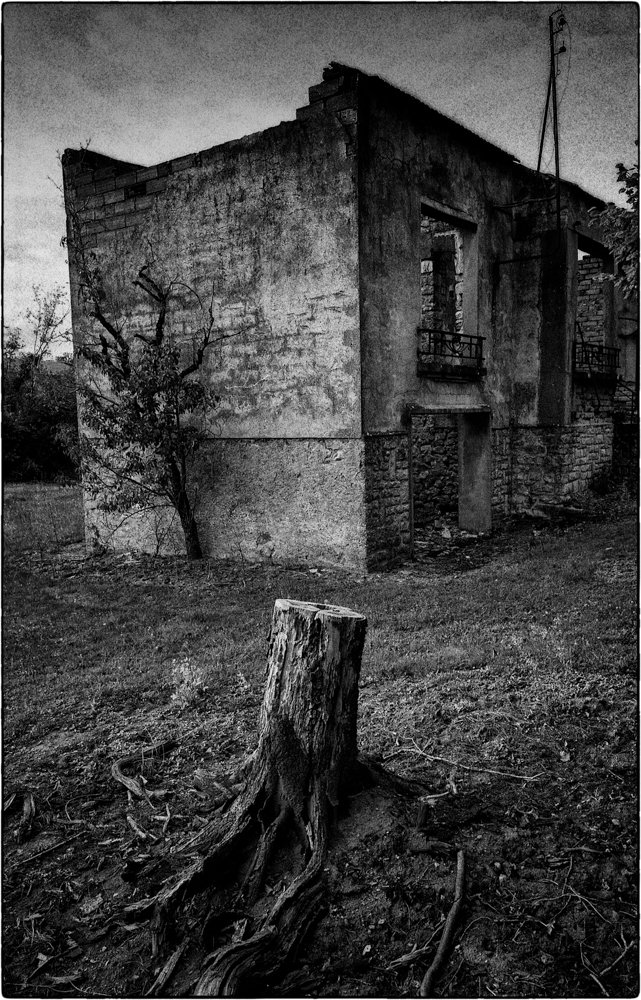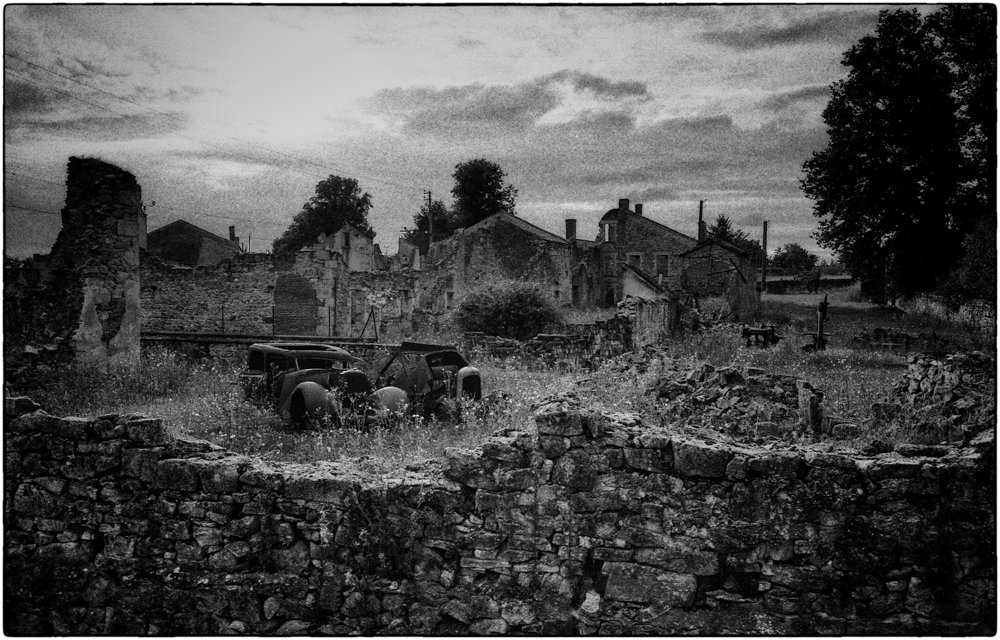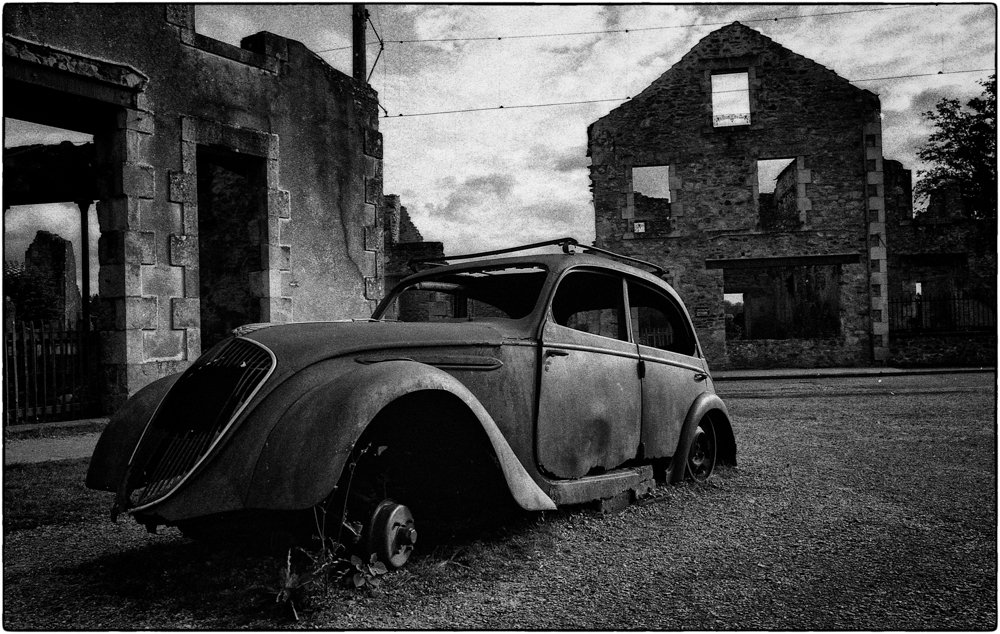
Oradour - Sur - Glane
On 10 June 1944, four days after D-Day, the village of Oradour-sur-Glane in Haute-Vienne in Nazi-occupied France was destroyed when 643 civilians, including non-combatant men, women, and children, were massacred by a German Waffen-SS company as collective punishment for Resistance activity in the area including the capture and subsequent execution of Waffen SS Sturmbannfuhrer Helmut Kämpfe, who an informant claimed had been burned alive in front of an audience. Kämpfe was a highly decorated commander in the 2nd SS Panzer Division Das Reich.
The Germans murdered everyone they found in the village at the time, as well as people brought in from the surrounding area. The death toll includes people who were merely passing by in the village at the time of the SS company's arrival. Men were brought into barns and sheds where they were shot in the legs and doused with gasoline before the barns were set on fire. Women and children were herded into a church that was set on fire; those who tried to escape through the windows were machine-gunned. Extensive looting took place.
All in all, 643 individuals are recorded to have been murdered. The death toll includes 17 Spanish citizens, 8 Italians, and 3 Poles.
Six people escaped the massacre. The last living survivor, Robert Hébras, known for his activism for reconciliation between France, Germany, and Austria, died on 11 February 2023, aged 97. He was 18 years old at the time of the massacre. The village was never rebuilt. A completely new village was built nearby after the war. President Charles de Gaulle ordered that the ruins of the old village be maintained as a permanent memorial and museum.























